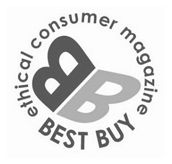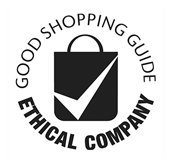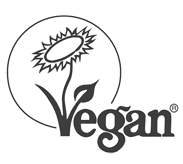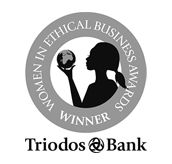A Makeup Artist’s cruelty free & sustainable beauty tips
More and more of us are aware of the small changes we can make in our daily lives to greatly reduce our environmental impact. Plastic straws, bottles and cotton buds are well-known culprits, but beauty products are also major offenders. According to non-profit Zero Waste Week, the beauty industry produces more than 120 billion units of cosmetics packaging every year. Makeup packaging with mixed materials in particular is pretty much impossible to recycle.
We reached out to award winning, vegan Bridal Makeup Artist and #RealMooncupUser Jaineesha Solanki, to hear her top tips for creating a more sustainable and cruelty-free makeup kit. Read on for Jaineesha’s sustainability journey in the beauty industry and get her hacks for phasing out the plastics and replacing the animal products in your makeup kit.
How to reduce the environmental impact of your beauty routine
I’ve been a professional Makeup Artist for over 10 years now. Initially I bought products according to what I liked to use and liked the finish of. I now have a 100% vegan and cruelty free makeup kit that I use on my clients.
My sustainability journey began when my sister watched a documentary on Netflix about the dairy industry and went from vegetarian to vegan pretty much overnight. Listening to her experience, I thought about what products I was using on my clients, many of which, I realised, were tested on animals.
After doing some research into ingredients, I became aware of micro-plastics and what happens when products get washed down the drain. They don’t biodegrade and are harmful to aquatic life. This made me also reflect on what would happen to products I was throwing away.
Beauty is a luxury, not a necessity
All the skincare, body care and makeup products I use professionally and on myself are vegan and cruelty free. Why harm animals, nature and the eco-system for something we don’t NEED for day-to-day living? In order to reduce my environmental impact, I try to make sure that any product I buy now is:
– plastic-free
– eco-friendly & sustainable
– vegan & cruelty-free
– can be recycled, repurposed or reused
It’s a long list, so shopping takes a while, but in the long run my habits are saving me money, and also helping to save the environment.
When researching beauty product ingredients, I was also shocked to learn about some of the ingredients being extracted from animals. Here are some examples:
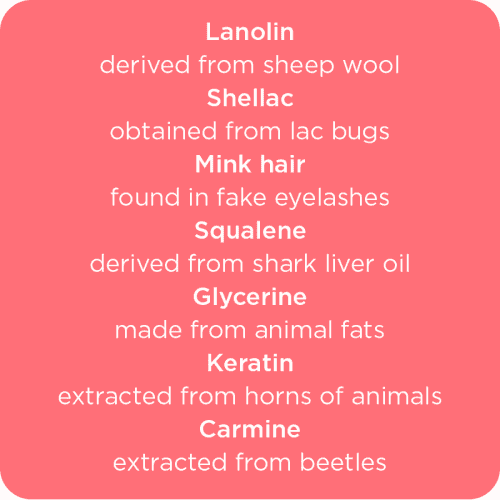
Many of these ingredients can be found in our skincare, hair and nail products, or makeup. Even though some of the ingredients can bring great results, there are really good plant-based alternatives available.
Baby steps to a plastic free life
Take a minute to look around you and recognise the materials that surround you. Think of your bathroom alone, the tiles, mirror, shower tray, bath, hair and skin products, cleaning products, plant pots, towels etc. Most of those items contain or involve plastic in some shape or form. Plastic is everywhere and for us to live a completely plastic free life would be impossible. Yes, we need to cut down on our plastic use. But we need to acknowledge that it doesn’t happen overnight. And it’s not an easy lifestyle change.
What I have found over the past four years, while trying to live more eco-consciously, is that rather than making drastic changes, baby steps are best. A good place to start is to recognise the types of plastics we are purchasing and learn how to recycle them properly (if they can be recycled at all) and avoid single-use plastic especially.
8 vegan & sustainable beauty tips
So, to make this journey a little easier, here’s a list of my tips for cruelty free, vegan and sustainable beauty choices. Pick and choose what you like and remember, it’s easier to implement one and then pick another rather than try everything at once.
1. Use up what you have
It’s best to use up what you have before buying a sustainable option. If you’ve found all your skincare and makeup is tested on animals, use it up, recycle the packaging where possible, and then start researching on a brand that is cruelty free and vegan, and purchase from them.
2. Buy less
Only buy products when you need to replenish them. Creating a cupboard that looks like a mini shop is not sustainable. We don’t need five versions of the same product. Buying less is a more sustainable choice.
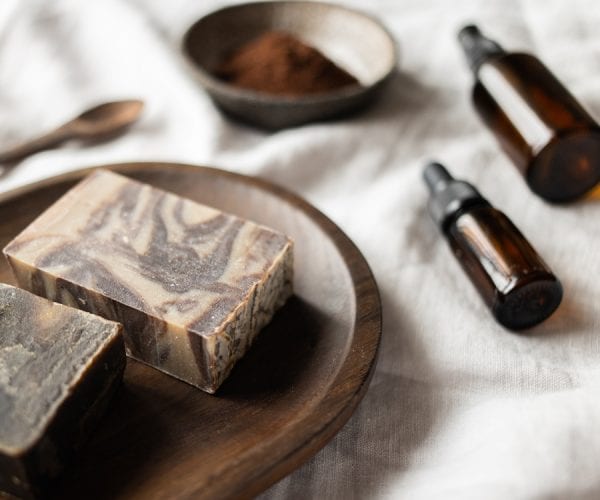
3. Buy cruelty free & vegan
Make sure to do your research and look out for official logos on the packaging. Check out The Vegan Trademark and The Leaping Bunny for more info.
4. Persevere with a product
Open products when you know you’re ready to start using and commit to it. I find with skin care it’s so easy to open one moisturizer, and then buy another and open that, and before you know it you have five different ones on the go. You need to use skincare consistently for at least 3-4 weeks to see improvement. Use up the product before deciding if it has worked for you or not.
5. Choose plastic free or zero waste beauty products
Most of our makeup packaging can’t be recycled at home. You could opt for package free makeup which is now more readily available. Bars of soap are a great way to cut out shampoo and body wash products, and they last for much longer too!
6. Do your research
Make a wish list of products and don’t buy them straight away – do your research, read reviews and check if it will actually work for you before buying.
7. Choose natural cleaning products
Once beauty is sorted, start looking at your cleaning products. They can also affect your skin, and whatever we pour down the drain can affect wildlife and water. There are so many natural products that you can clean with which will leave your home sparkling!
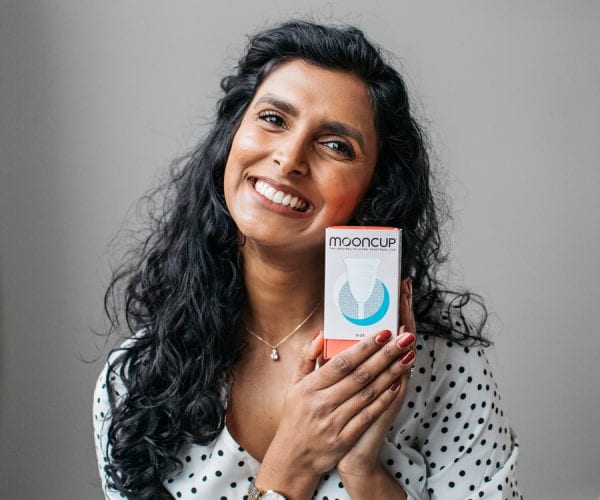
8. Choose a plastic free period
Sanitary products are so easy to shop for, but most big brands make their products with plastic. They’re also single use only, so once they are discarded in the bin they’ll head to landfill and sit there for hundreds of years without bio-degrading. You can make an easy switch by purchasing washable sanitary towels, period pants or a menstrual cup like the Mooncup®.
The Mooncup is my absolute favourite. It’s my Mooncup that has made my menstruation journey an easier one. It’s helped with period pains, it’s always there when I need it (no more last minute dashes to the shop), it’s easy to use and clean, it has saved me so much money, and most importantly it has stopped so much plastic waste being thrown in my bin! Once I started researching the products, ingredients and packaging and the effects they had on my body and the planet, I made it my business to change my lifestyle and hopefully have a positive impact on the environment. I started making as many changes as possible. Some of them are still a part of our lifestyle today, and some I’ve had to digress back to.
I’ve always believed every little action can help and contribute to a bigger change. We’ve seen that the environment and climate is adaptable so if we start now, we can be a part of the change. My aim is to help create a future for the generations to come who will be able to enjoy nature and experience all the gifts it has to offer.
Remember, take it one day at a time and do what you can. Every change you make has an impact somewhere. If we all followed these sustainable beauty tips, our collective environmental impact would be dramatically improved.
Switch to a plastic free, vegan and cruelty free period with the Mooncup menstrual cup. Find out more and get yours here.
If you have any questions about the Mooncup®, please feel free to contact us here.
Read more on the Mooncup blog:
How to have a vegan period?
How is the Mooncup® menstrual cup environmentally friendly? 10 reasons
How to choose the best menstrual cup for you
10 bathroom swaps to reduce your plastic waste
Eco-friendly tips for a greener home
Top tips for an eco-friendly kitchen
What kind of person uses the Mooncup?


